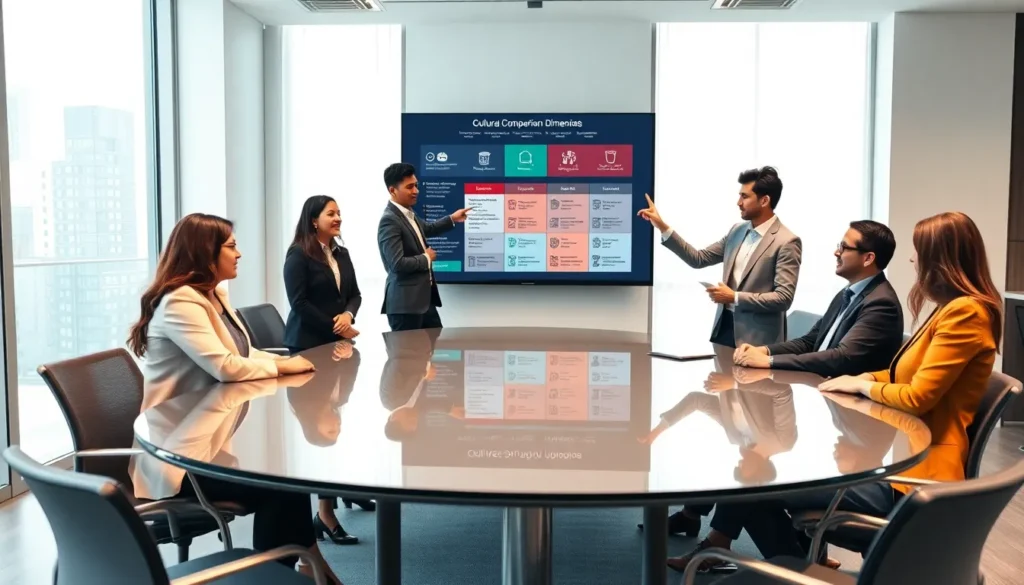In today’s fast-paced work environment, it’s crucial to keep morale high and productivity even higher. Enter employee goal setting, a magical recipe that can turn aspirations into reality, kind of like turning a regular pancake into a fluffy gourmet delight, but without the mess. With the right goals in place, employees can transform themselves into performance powerhouses. So, whether you’re looking to boost engagement or encourage professional development, understanding how to set effective goals is key. Let’s jump into the world of employee goal setting examples that’ll make your strategy shine.
Table of Contents
ToggleUnderstanding Employee Goal Setting

Setting goals is like giving your team a compass in the wild, without clear direction, it’s easy to get lost. Employee goal setting provides that essential guidance. It encompasses the process of defining objectives tailored to boost individual performance, team dynamics, and organizational success. Think of it as a roadmap, where every milestone brings you closer to a defined destination, whether it’s achieving a sales target or acquiring a new skill.
Each goal should resonate well with the company’s mission and vision, ensuring everyone is on the same page. In this ever-evolving workplace landscape, the ability to adapt these goals can lead to more robust outcomes. Besides, clarity in goal setting aids employees in understanding what is expected of them, enabling them to strive for success with confidence.
Importance of Goal Setting in the Workplace
The importance of goal setting cannot be overstated. It serves as the foundation for performance evaluation and personal growth. When goals are set thoughtfully, employees feel a sense of purpose, which is a significant motivator. In fact, studies show that organizations with effective goal-setting strategies often encounter higher levels of employee engagement and job satisfaction.
Also, when employees understand their objectives, they are much more likely to align their efforts with the overall business strategy. This alignment not only fosters collaboration but also nurtures a shared sense of belonging, everyone working towards a common goal, like bees buzzing around a hive. And let’s be honest, there’s nothing more satisfying than watching your team achieve goals and celebrate successes together.
Types of Employee Goals
Employee goals can be categorized into various types.
SMART Goals Framework
SMART stands for Specific, Measurable, Achievable, Relevant, and Time-bound. This framework ensures goals are clear and reachable. For instance, instead of saying, “I want to improve my sales,” a SMART goal would state, “I want to increase my sales by 20% within the next quarter.” This precision empowers employees to take actionable steps toward their dreams.
Performance Goals
Performance goals focus on the execution of tasks associated with job responsibilities. These could include achieving a sales target, reducing errors in operations, or increasing customer satisfaction scores. Setting performance goals keeps the focus sharp and ensures that employees know exactly what’s at stake.
Developmental Goals
Developmental goals aim at personal growth and skill enhancement. Whether it’s learning a new software tool or developing leadership abilities, these goals foster continuous improvement. Employees who pursue developmental goals are often more engaged and productive, making learning a pivotal aspect of an organization’s culture.
Examples of Effective Employee Goals
Here’s where the rubber meets the road. Let’s explore some tangible examples of effective employee goals.
Short-Term Goal Examples
- Complete a Training Course: “She will finish an online course in leadership skills by the end of the month and apply one new technique in a team meeting thereafter.”
- Increase Customer Satisfaction: “His goal is to achieve a 90% satisfaction rating from customer feedback within the next two months.”
Long-Term Goal Examples
- Career Advancement: “They aim to complete a management certification within the next year as part of their career development plan.”
- Building a High-Performing Team: “He seeks to develop a fully functional team capable of delivering projects with a 95% satisfaction rate by year-end.”
Adopting a mix of short and long-term goals allows for agility while keeping the eye on the prize.
Measuring Progress and Success
Tracking progress is where the magic truly happens. If you can’t measure it, you can’t improve it. Setting up a system for monitoring goals is essential to ensure employees remain motivated and on track.
Tools and Strategies for Goal Tracking
Utilizing goal management software like Asana or Trello can provide a visual representation of progress. These tools often integrate with daily operations, allowing for seamless updates. Also, regular check-ins help transparency. Managers should frequently communicate with their team members, providing essential feedback and adapting goals as needed. Eventually, the combination of technology and communication fosters a culture of accountability.
Feedback and Adjusting Goals
No one reaches the summit without recalibrating their compass occasionally. Regular feedback and adjustments to goals are pivotal in the continuous growth cycle. Setting aside time for constructive discussions not only aids in identifying any roadblocks but also allows for reevaluation of the goals based on current data and circumstances.
Encouraging open dialogue promotes a growth-oriented environment, where employees can feel comfortable discussing their challenges and celebrating their wins alike. Plus, it deepens the connection between managers and team members, fostering a sense of trust and collaboration.









